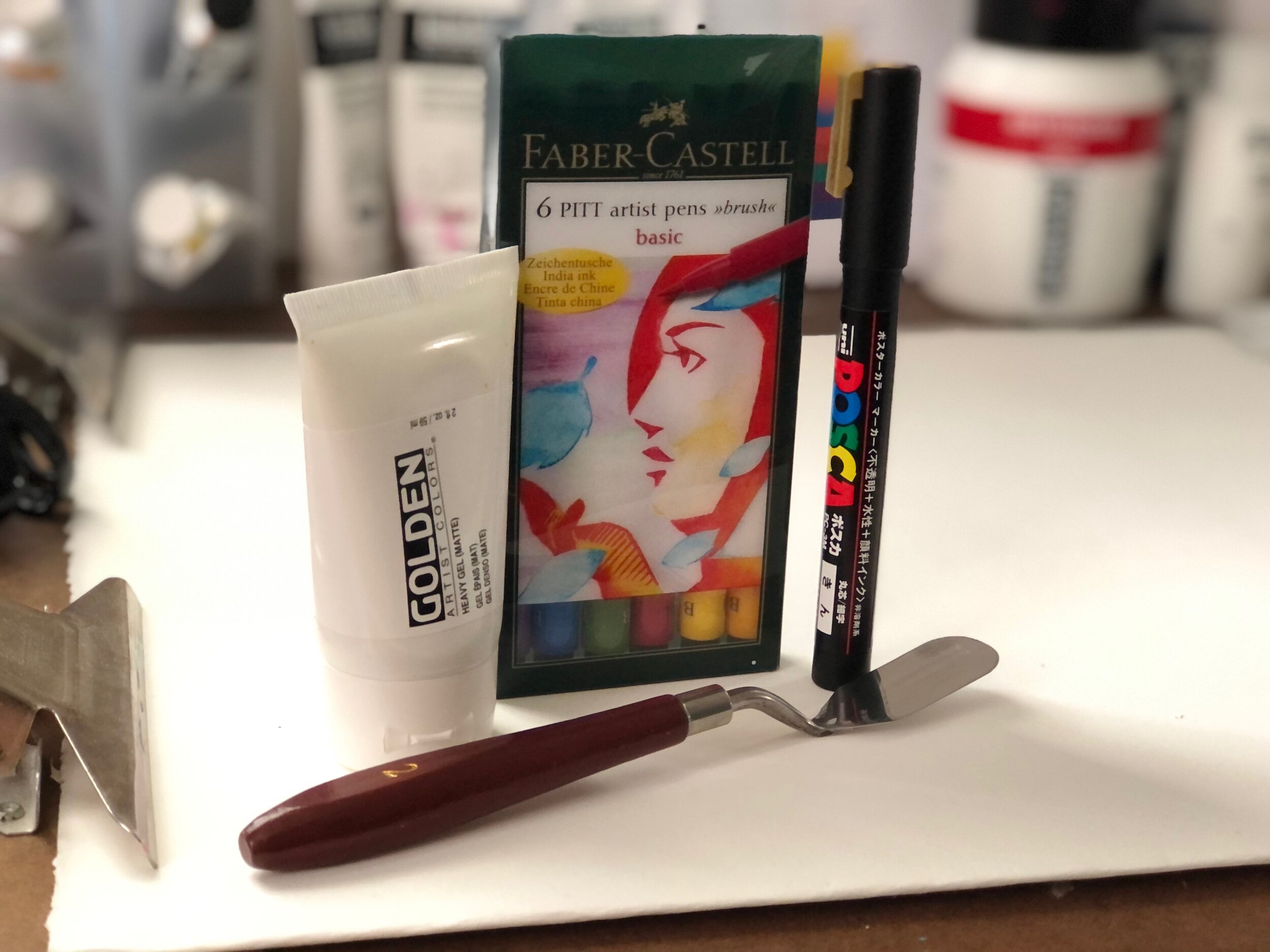How to Sign Your Artwork
It may sound like a simple task, but there are a lot of variables that go into the process of signing your artwork. I’m going discuss a few roadblocks that can happen and offer some solutions.
Sign Before Varnishing and What Media to Use
You want your signature to remain on your sold artwork for many years to come. Therefore, it’s always a good idea to sign before you varnish your painting in order to extend the life of your signature. With that in mind, it’s very important to use the correct media for your signature. You can’t use anything water-soluble because the varnish will turn it into runny watercolor and ruin your signature. I recommend using a pen that is waterproof with permanent ink. Two good examples of this would be Faber-Castell’s PITT artist pens and Posca Paint Markers. I have used both to sign my art and have had great success. I will warn you to make sure you let your signature ink dry completely before going over it with a varnish, so it doesn’t smudge.
Gather Your Supplies
Posca Paint Markers and Faber-Castell’s PITT artist pens have waterproof, permanent ink. These are a great choice when looking for a pen to sign your paintings!
Dealing with Difficult Textures to Hand Sign On
One of the challenges I have faced in signing my art is the texture on the canvas. Sometimes either the texture of the paint, mixed media or coarse texture of the canvas itself makes it really difficult to sign your name. A solution for this issue is to create a smooth, flat surface where you can sign your name. You can do this by using a palette knife and heavy gel medium. The heavy gel will dry clear with a thin layer so there will be no need to apply more paint on top unless you want to. (Warning: Always test the transparency of the gel medium on a scrap painting canvas before you put it on your finished artwork.) Apply it to your canvas with a palette knife to ensure a thin layer goes on smooth onto the canvas. Let it dry completely and then sign your name onto the smooth, clear surface. This trick has made it so much easier to sign my art on difficult textured surfaces.
Where to Sign
I think it’s a good idea to be consistent with your signature when possible. Plan your composition around the area where you normally sign. It helps makes your work easily identifiable to collectors. One thing to keep in mind is to put your signature where it can be easily read but not to become a focal point in your art. You want the signature to be visible so people interested in your work can identify you, but also not be such a bullseye that it detracts from your artwork. Also, think outside the box. Don’t be scared to sign your art on the side of your canvas. This resolves the bullseye issue while also allowing the viewer to know your name.
Cursive or Print Signature and Why it’s Important
The most important thing about your signature is being able to read it. It is frustrating for a collector to see an artwork that they love but find a signature that is not legible. You will want them to be able to identify you so they can look you up and buy a piece for themselves. Your signature on your art can be a great marketing tool if you let it!
Tell Your Story
Leave a comment below with your art signing experience and any tips or suggestions!


